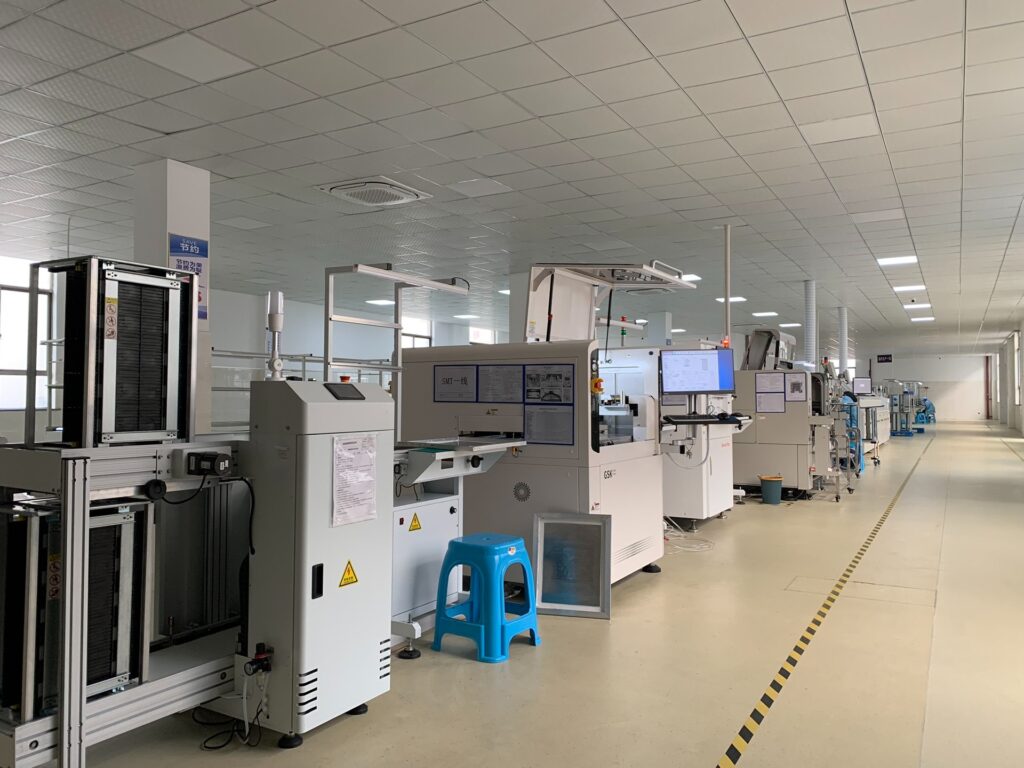Introduction to SMT Machines
Surface Mount Technology (SMT) machines play a crucial role in the electronics assembly process by automating the placement and soldering of surface-mounted components. The efficiency, precision, and versatility of these machines have made them indispensable in high-volume PCB production. SMT machines are available in various types, each optimized for specific operations within the assembly line.

Key Types of SMT Machines
SMT assembly lines often incorporate several specialized machines, each performing distinct tasks. Below are the main types of SMT machines used in electronics manufacturing:
1. Pick-and-Place Machine
- Function: Picks up surface-mounted components from feeders and places them accurately on the PCB.
- Key Features:
- High-speed and precision placement.
- Vision systems for component alignment.
- Multiple placement heads for handling a wide variety of component sizes.
2. Reflow Soldering Oven
- Function: Heats the PCB to melt and reflow solder paste, securely bonding components to the board.
- Key Features:
- Zone-based temperature control for precise soldering profiles.
- Nitrogen atmosphere option to minimize oxidation.
- Conveyor system for smooth PCB transportation.
3. Stencil Printer
- Function: Applies solder paste to the PCB in preparation for component placement.
- Key Features:
- High-precision alignment and squeegee pressure control.
- Vision systems for alignment accuracy.
- Automatic cleaning systems for stencils.
4. Solder Paste Inspection (SPI) Machine
- Function: Inspects the quality and volume of solder paste applied to the PCB before component placement.
- Key Features:
- 3D inspection for accurate volume measurement.
- Automatic feedback to the stencil printer for adjustments.
- High-speed inspection for real-time process monitoring.
5. Automated Optical Inspection (AOI) System
- Function: Inspects component placement and soldering quality on the assembled PCB.
- Key Features:
- High-resolution cameras for detailed inspection.
- Advanced algorithms for defect detection.
- 3D inspection capabilities for complex components.
6. Wave Soldering Machine
- Function: Solders through-hole components on the underside of the PCB.
- Key Features:
- Adjustable conveyor speed to accommodate various PCB sizes.
- Selective wave soldering options.
- Preheating zones for optimal soldering performance.
7. Depaneling Machine
- Function: Separates individual PCBs from a panel after assembly.
- Key Features:
- Multiple cutting methods, including milling, routing, and laser cutting.
- Vision systems for precise alignment.
- Adjustable cutting speeds for different materials.
Table: SMT Machine Types and Functions
| Machine Type | Primary Function | Key Features |
|---|---|---|
| Pick-and-Place Machine | Places components onto PCBs | High-speed, vision system, multiple heads |
| Reflow Soldering Oven | Bonds components by reflowing solder paste | Zone temperature control, nitrogen atmosphere, conveyor system |
| Stencil Printer | Applies solder paste to PCBs | Precision alignment, automatic stencil cleaning |
| Solder Paste Inspection (SPI) | Inspects solder paste application | 3D volume measurement, real-time process feedback |
| Automated Optical Inspection (AOI) | Inspects component placement and soldering quality | High-resolution cameras, 3D inspection, defect detection algorithms |
| Wave Soldering Machine | Soldering of through-hole components | Adjustable conveyor speed, preheating zones |
| Depaneling Machine | Separates PCBs from panels | Vision systems, laser/milling cutting options |
Essential Features of High-Quality SMT Machines
1. High Throughput
SMT machines must offer high-speed operation to meet the increasing demands of mass production. High throughput helps in reducing overall production time and increasing efficiency.
2. Precision and Accuracy
Precision in component placement and soldering is vital to maintain quality standards. High-quality machines integrate advanced vision systems and control algorithms to ensure accurate placement.
3. Versatility
Versatile SMT machines can handle a wide variety of component sizes and types, making them ideal for producing complex PCBs with different configurations.
4. Quick Changeover
Efficient SMT machines are designed for quick changeover between different product types, minimizing downtime and improving overall productivity.
5. Reliability and Durability
SMT machines are subjected to continuous operation in industrial environments, making reliability and durability essential for long-term performance. The use of robust materials and high-quality components ensures their longevity.
6. User-Friendly Interface
A well-designed, intuitive interface simplifies machine operation, reducing the learning curve for new operators and improving the overall efficiency of the production line.
7. Integration Capabilities
Seamless integration with other machines in the assembly line and with Manufacturing Execution Systems (MES) is crucial for efficient data exchange and workflow optimization.
8. Advanced Inspection and Monitoring
High-quality SMT machines often include built-in inspection systems like 3D SPI and AOI, allowing for continuous monitoring and control of the assembly process, thus reducing defects.
9. Energy Efficiency
Energy-efficient features, such as zone-based heating in reflow ovens and standby modes during idle periods, contribute to reduced operational costs and energy consumption.
10. Maintenance and Support
Reliable maintenance schedules, comprehensive diagnostic tools, and responsive manufacturer support help ensure the smooth operation of SMT machines.
Conclusion
Choosing the right SMT machines involves evaluating production requirements, component specifications, and operational goals. By focusing on key factors such as precision, speed, versatility, and integration, manufacturers can select equipment that enhances both productivity and product quality. Regular maintenance and adherence to best practices further ensure the long-term reliability and performance of SMT machines in electronics manufacturing.
